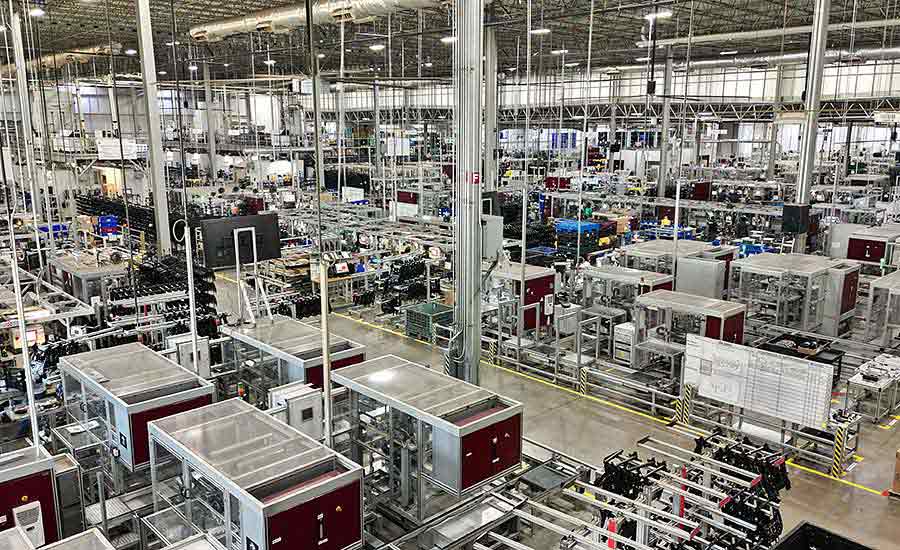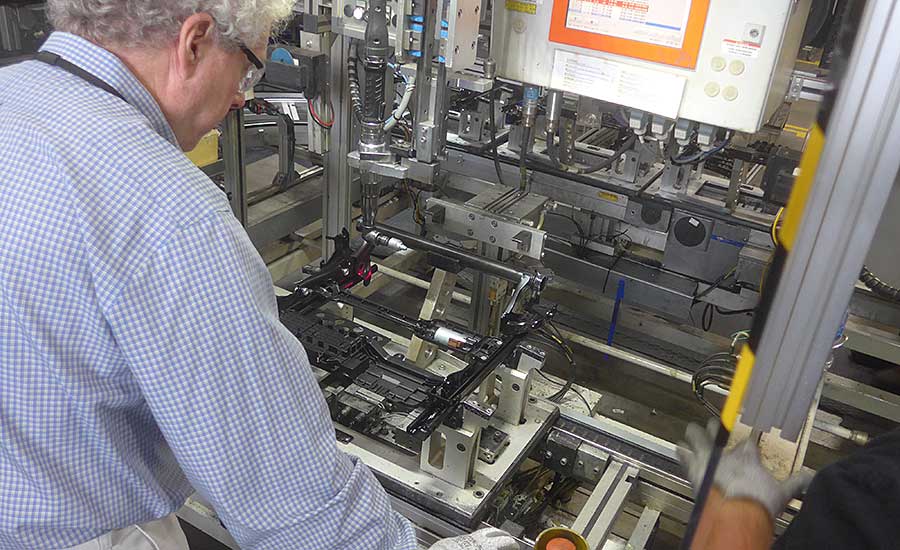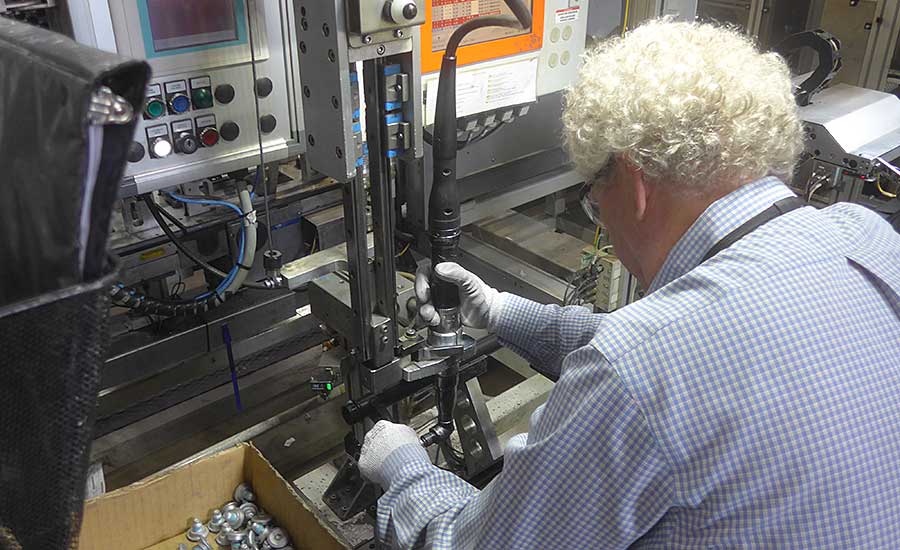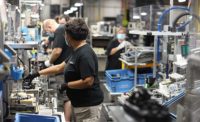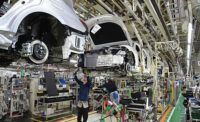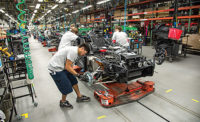Brose is a company that most motorists have never heard of. That’s because the 114-year-old German firm specializes in mechatronic components and systems that are hidden from view. But, those hard-working products make vehicles comfortable, efficient and safe.
The complex world inside a car door or under a seat is Brose’s domain. The $7 billion Tier One supplier does business with just about every automaker in the world. Customers include legacy firms ranging from Audi to Volkswagen, in addition to startup electric vehicle manufacturers such as Lucid and Rivian.
Cooling fan modules, door modules, engine control units, lift gate systems, seat structures and other Brose products can be found in one out of every two new vehicles produced worldwide.
One thing that makes Brose unique is that its customers include both automakers and other Tier One suppliers, such as Adient, Faurecia, Lear, Magna, Marelli and Valeo. In addition, Brose is a producer of drive systems for e-bikes.
One of Brose Group’s most important facilities is its 18-year-old assembly plant in Vance, AL, which generates more than $400 million in annual revenue. The 302,000-square-foot factory is strategically located between Birmingham and Tuscaloosa, near Daimler’s sprawling Mercedes-Benz assembly plant that produces sport utility vehicles.
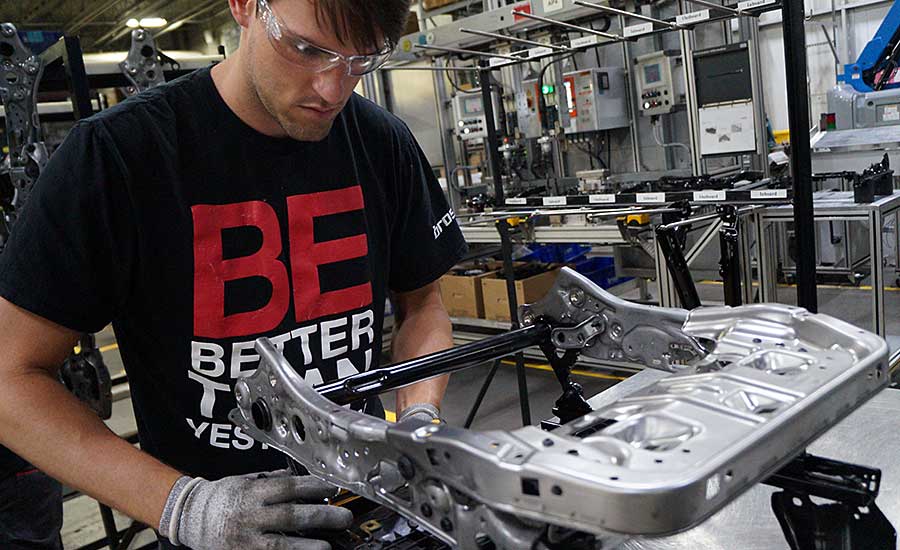
The Brose factory mass-produces door modules and seat structures for a wide variety of vehicles. Its products can be found in traditional gas-powered vehicles, such as the Ford F-150 pickup truck, and electric vehicles, such as the new Mercedes-Benz EQS SUV. The facility also makes products that are used in BMW, Volvo and Volkswagen automobiles.
Brose Tuscaloosa Inc. is the recipient of the 2022 Assembly Plant of the Year award sponsored by ASSEMBLY Magazine. The world-class plant was chosen for the 19th annual award because of its innovative employee engagement programs and process control systems. In addition, the company is a leader in applying continuous improvement and quality initiatives.
“During the last three years, we have conducted numerous process improvements and implemented procedures to reduce our plant costs and improve our overall quality,” says Jim Barbaretta, plant manager. “We have improved productivity and production costs by 25 percent over the last four years.
“We also improved our productivity by 14 percent and have achieved an average continuous improvement savings of more than $2 million annually,” adds Barbaretta.
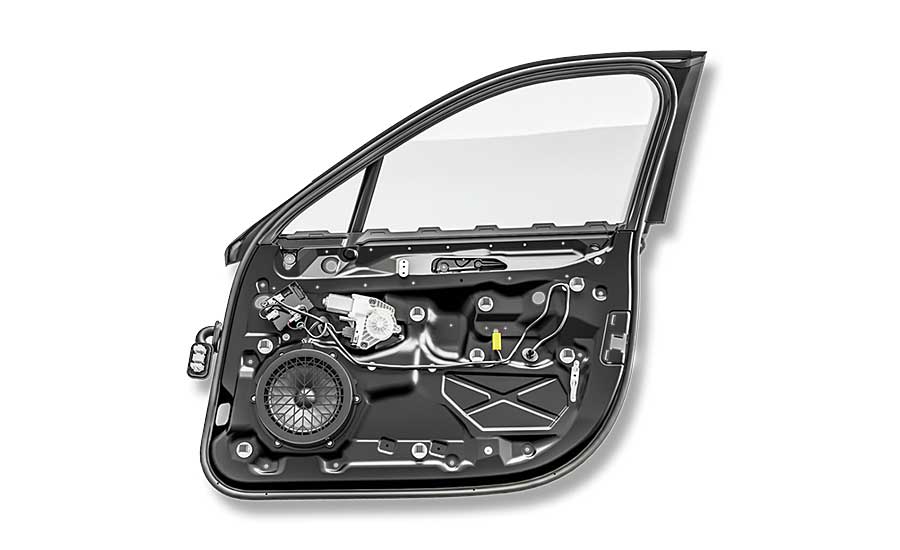
In recent years, Brose Tuscaloosa has implemented several projects, such as value stream mapping, that have increased throughput by 15 percent. At the same time, quality costs have been reduced by 40 percent, customer complaints have dropped by 39 percent and direct production costs have declined by 17 percent.
“Brose never settles for good enough,” claims Barbaretta. “We strive to be, and partner with, the best. Our continuous improvement program, coupled with our electronic suggestion system and our visual idea boards on the plant floor, have improved our competitiveness and employee engagement.
“We have a lot of seasoned talent and experience at this plant, which sets us apart from other facilities,” Barbaretta points out. “For instance, we have a very strong equipment and maintenance team. In addition, we have a lot of younger employees in the mix who bring new ideas and technology from outside the factory walls.
“What separates Brose Tuscaloosa from our competition is the engagement of our incredible employees,” explains Barbaretta. “When you enter the doors of our facility, you immediately feel the energy of all our employees and recognize it is not your typical assembly plant.”
Strong Roots
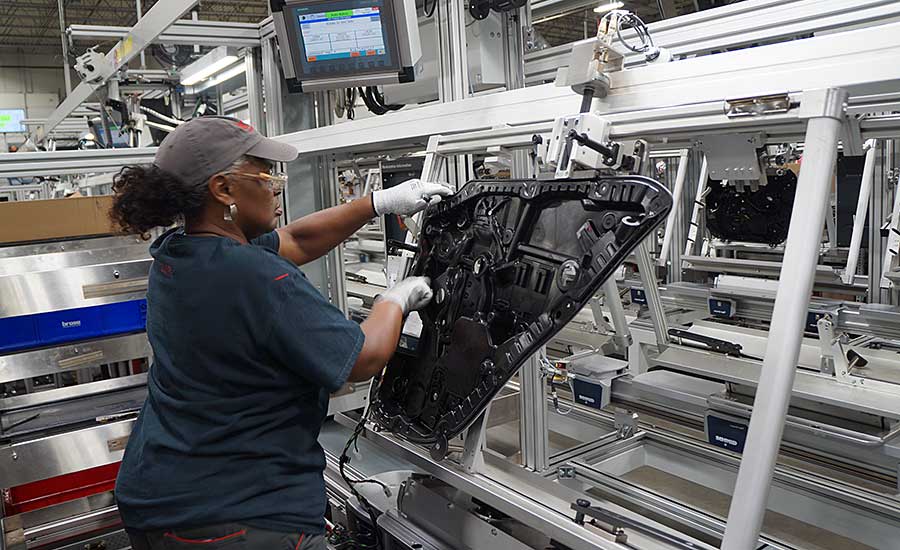
Brose Fahrzeugteile GmbH & Co. is based in Coburg, Germany, and operates 70 plants around the world. Brose also has a joint venture in Eastern Europe with Volkswagen AG called Brose Sitech that specializes in seat systems.
Brose has operated in North America since 1993, with headquarters in Auburn Hills, MI. In addition to the Tuscaloosa facility, the company has assembly plants in Belvidere, IL; Duncan, SC; London, ON; New Boston, MI; and Warren, MI. It also operates production facilities in Colon, Puebla and Queretaro, Mexico.
Brose was founded in Berlin by Max Brose in 1908. At the time, his parents operated a coach-making firm in Wuppertal, Germany. Brose’s early company specialized in horseless carriage accessories, such as headlights, horns, mirrors, spark plugs and speedometers. The company’s catalog also included a line of clothing for open-air motorists and their companions, such as a leather mask and helmet for dogs.
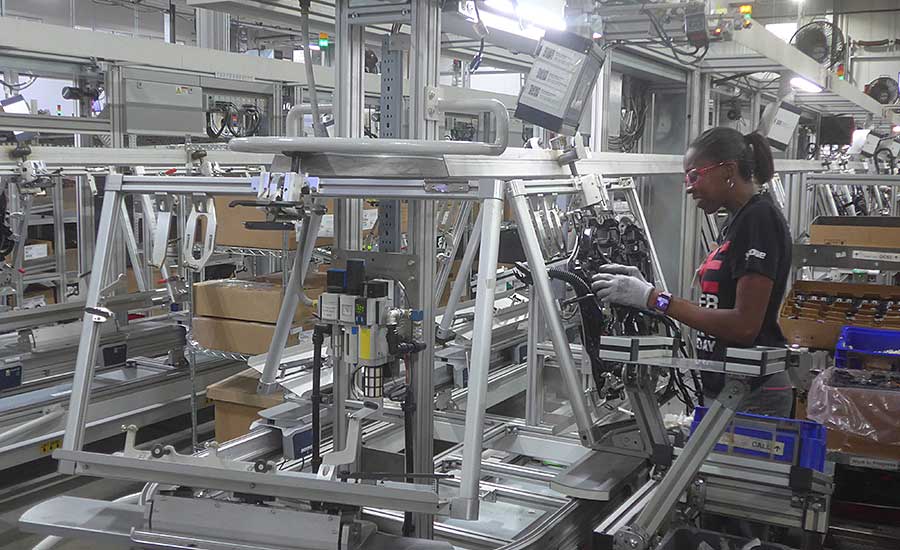
In 1919, Brose started Metallwerk Max Brose & Co. to produce metal components. He went on to head the company for five decades.
Brose’s breakthrough product was the window regulator. The “crank drive for lowerable windows” was patented in 1926 and displayed for the first time at the 1928 Berlin Motor Show. The window cranking apparatus was touted for its “simple design and safe mode of operation.”
Brose perfected the product and a few years later unveiled a crank drive that featured a “wrap spring brake.” By placing a small round spring in a steel housing, the Atlas window regulator made it possible to move a gear segment with a lever using a crank, and to hold a secured side door window in any position.
The working principle of the wrap spring brake is still used today in various Brose products, such as manual seat height adjusters and power lift gate drives.
In the 1940s, Brose dabbled in a variety of metal products, such as canisters, handles and hinges. For a short period, it even produced a popular typewriter called the Brosette. However, since the late 1950s, the company has focused exclusively on auto parts.
To meet growing consumer demand for comfort, Brose engineers developed an electrically driven window regulator in the early 1960s. It first appeared in the 1962 BMW 3200 CS touring coupe.
During the mid-1960s, Brose branched out into seating technology, creating products that could adjust the height, length and tilt adjustment of front car seats. At the time, many automakers were evolving from traditional bench seats to bucket seats.
In 1969, Brose began producing seat recliners for adjusting backrests. And, in the mid-1970s, it developed power seat adjusters that controlled height, length and tilt at the push of a button. Mercedes-Benz began equipping its S-Class sedans with the feature in 1979.
Brose engineers developed a modular door system in the mid-1980s. This innovation provided numerous benefits to automakers, including lower cost, improved safety and simplified installation.
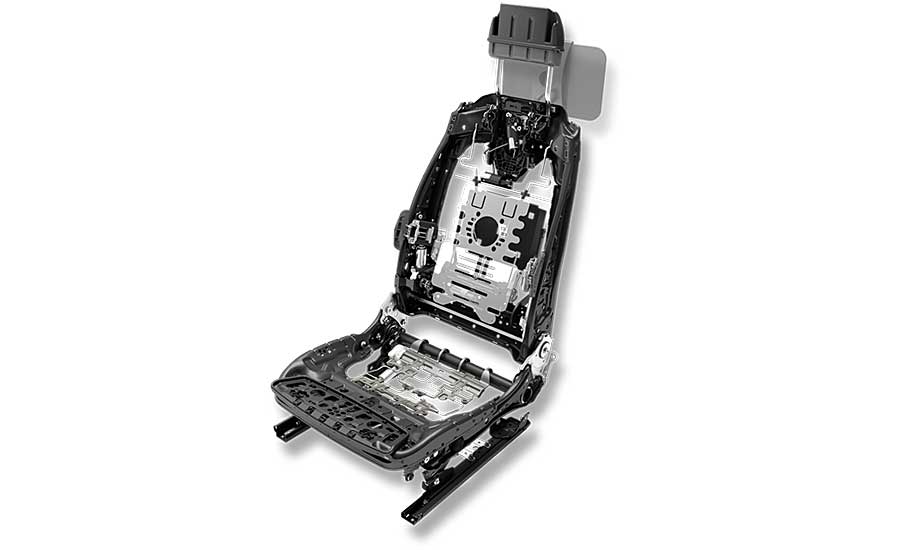
In 1996, Brose became the first supplier to produce door modules that combined key functions in a single system, including a window regulator, latch, central locking mechanism, stereo speakers and wiring harnesses.
The move transformed the company from a specialized supplier of window regulators into a systems integrator. Everything from the side air bag, impact protection, door handle and switch, to elements of the interior trim, were integrated. The first vehicle equipped with the new door module was the Volkswagen Passat.
Brose also pioneered just-in-sequence production processes in the late 1990s. Short-term, on-demand assembly and delivery of door systems helped automakers avoid expensive warehousing and inventory logistics.
During the 21st century, Brose has continued to grow and innovate, opening new plants and developing new products. The company has also made several strategic acquisitions along the way.
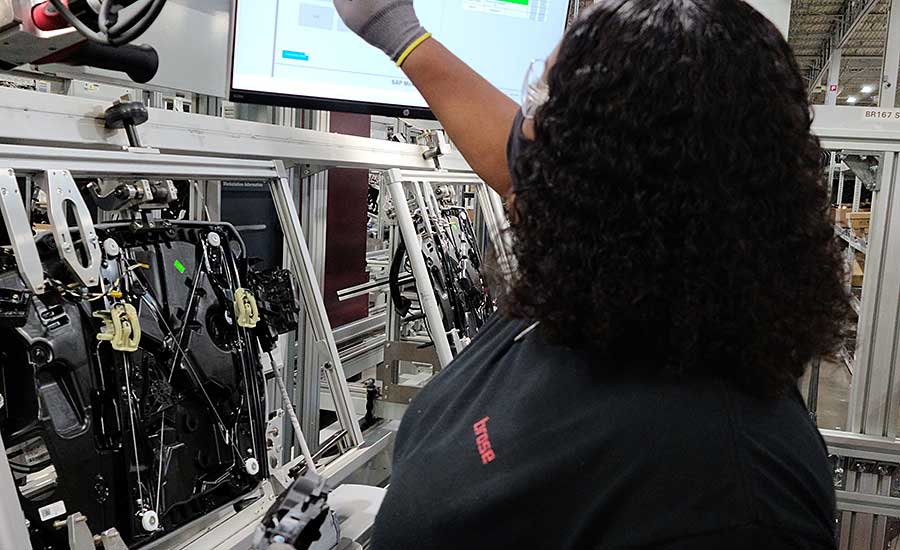
In 2002, Brose acquired Bosch’s door closure business. Latch modules combined the door latch, inside handle, and all mechanical and power connections into one subassembly that shortened installation time on automakers’ final assembly lines.
During this time, Brose also became a leading player in the auto industry’s lightweighting efforts. One key breakthrough was a composite door system that was used for the first time in 2007 on the Ford Edge and Lincoln MKX. A year later, Brose acquired Continental AG’s electric motor operation.
In 2018, Brose marked a milestone when it produced more than 80 million seat rails globally. It expects to manufacture more than 105 million of the metal structures annually by 2024.
Max Brose’s grandson, Michael Stoschek, took over as president and CEO of the company in 1971 and successfully led the company through five decades of growth. Today, he’s still active in the firm, serving as chairman of the Brose Group, which is the fourth largest family-owned supplier in the auto industry.
Quality Products
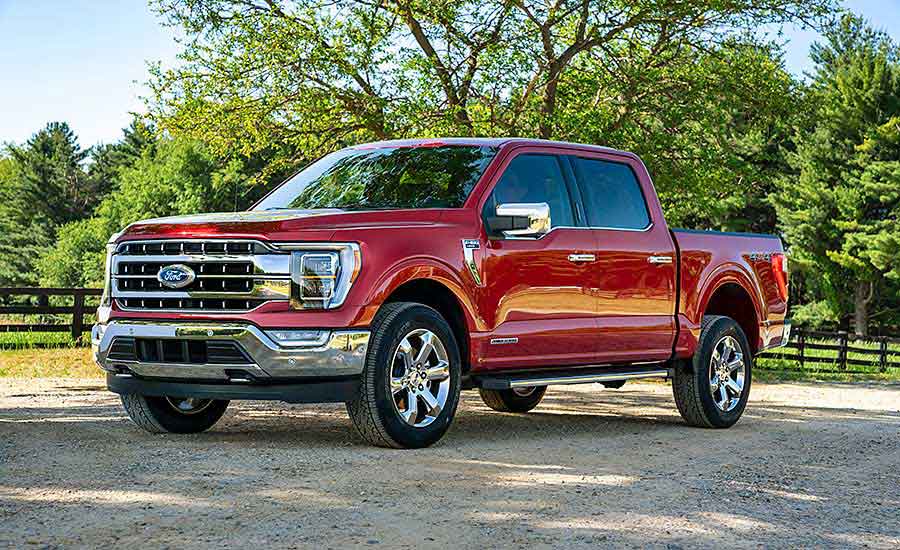
The 2022 Assembly Plant of the Year specializes in door modules and seat structures. Up until a couple of years ago, Brose Tuscaloosa also assembled cooling fan modules. But, it has since moved production offsite to a local supplier that molds the plastic shroud and fan blades.
“That eliminates the cost of moving large plastic components back and forth,” says Barbaretta. “However, we inventory all parts and components, such as motors, and ship the final product to customers. We have a team that coordinates all the manufacturing and logistics activity at the molder.
“The products we assemble aren’t directly affected by most of the mega trends that are currently reshaping the auto industry,” explains Barbaretta. “Whether a vehicle runs on gas, batteries or hydrogen, for instance, it’s still going to have a door, windows and seats.
“We produce the same basic door modules and seating structures for EVs that we make for traditional internal combustion engine vehicles,” notes Barbaretta. “However, EVs have forced us to focus more on acoustics, as these vehicles are much quieter.
“Today, we’re putting a lot of energy into our production and test processes to verify that we have good sound quality,” says Barbaretta. “We’ve had to adapt to customer expectations and adjust our parameters for acoustics performance.”
Assemblers at Brose Tuscaloosa rely on a number of modular, standardized components that are used for different customers and combined with parts that can be customized. The plant obtains more than 60 percent of its parts from overseas. That’s because Brose plants in China, Germany and Mexico produce key components, such as door and seat control units, motors and sensors.
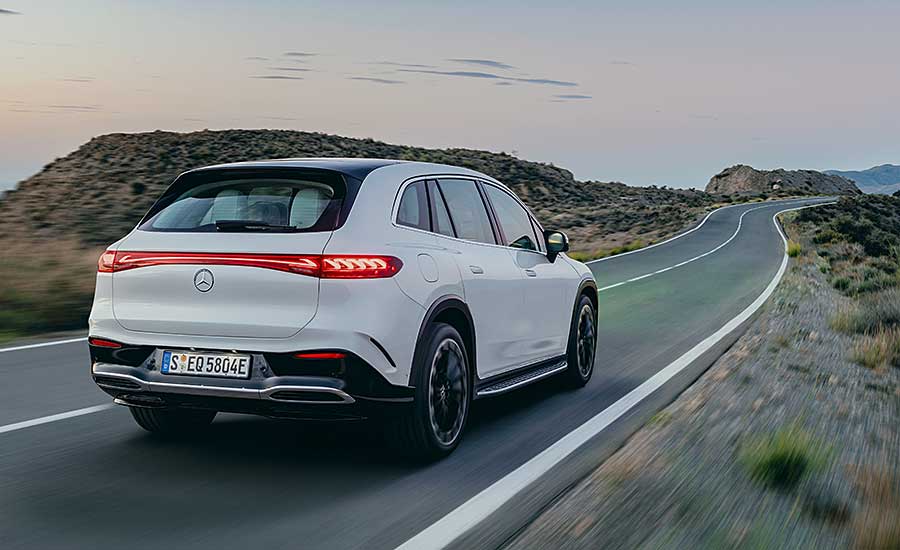
Guide rails and other stamped metal parts are sourced from various U.S. suppliers. Those components are e-coated at an in-house paint shop that uses state-of-the-art equipment.
Door systems integrate all of the mechanical, electrical and electronic functions of a vehicle door on a single carrier. That reduces the number of components, which lowers cost and weight. Brose Tuscaloosa supplies the modules to automakers’ assembly lines pretested, ready-to-fit and synchronized with their vehicle production needs.
Door modules typically weigh about 7 pounds and use a wide variety of components made out of lightweight materials, such as plastic carrier plates and steel guide rails. The carrier is the largest component, because it includes latch systems, motors and wiring harnesses. It consists of glass-fiber reinforced polypropylene combined with functional elements made out of long glass fiber-reinforced plastic, such as speaker holders and cable fasteners.
The sealed carrier plate within the module separates the wet and dry side of the door. This separation provides 100 percent sealing against humidity, dust and infiltration, as well as improved acoustics.
Although many door modules look similar, there are multiple varieties that contain unique features, offering a wide variety of functions and comfort to end users.
In addition, some vehicles, such as Mercedes-Benz’s U.S.-built SUVs, are exported to different countries. Brose Tuscaloosa assemblers install different control modules, door latches, wire harnesses and other components to comply with regional differences.
“There more than 1,000 variations, which adds complexity to the assembly process,” says Tim Griggs, manager of production engineering and maintenance as Brose Tuscaloosa. “Door modules vary in terms of functions, number of components and assembly steps.
“Many variations are due to a significant number of options offered by OEMs,” explains Griggs. “For example, there are more than 100 wire harness part numbers alone, leading to more than 1,000 variant options, and each door module having its own unique bill of material.”
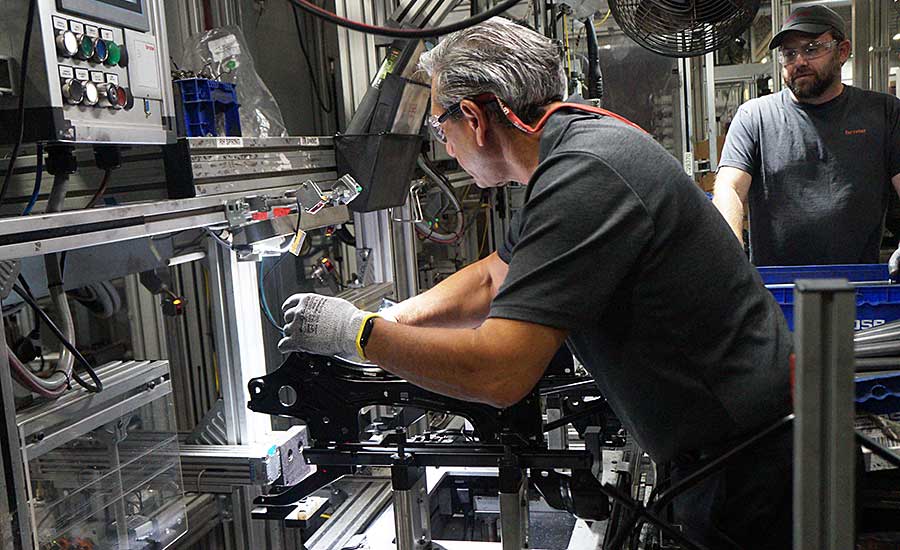
For customers such as Mercedes-Benz, door module assembly and shipment are carried out in pace with their daily vehicle production schedules. After electronically receiving an order, Brose Tuscaloosa operators have less than three hours to assemble, fully inspect and ship a ready-to-install subassembly. The door systems are delivered directly to the final assembly plant located nearby.
“Extreme flexibility is needed in the assembly process, because we only receive orders a couple of hours before we have to deliver them to Mercedes-Benz,” adds Griggs. “Storage of all these components created some challenges, which we recently solved with the implementation of automatic warehouses line side. The vertical carousel storage towers save valuable floor space, and efficiently deliver wire harnesses and other parts to operators.”
Elsewhere in the plant, assemblers produce seat structures on dedicated lines. Mixed materials make Brose seats lightweight, yet strong enough to maintain crash safety standards. For example, cross tubes and side panels are made of high-strength steel, while some of the metal components in the seat adjuster have been replaced by plastic parts.
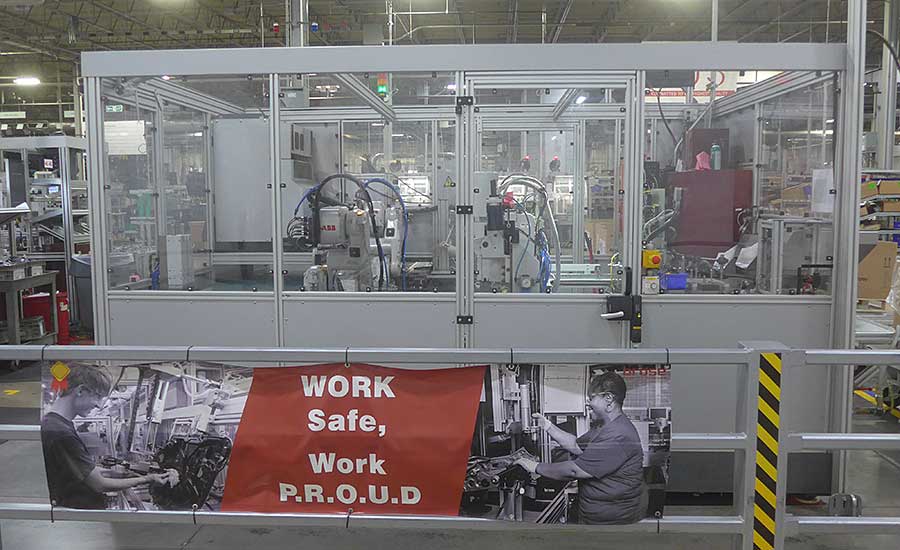
In addition to reducing component weight to 300 grams, making it 50 percent lighter than the previous model, Brose engineers were able to cut costs by 20 percent. Thanks to the use of high-strength steel, the company managed to reduce the wall thickness of seat side members from 2.2 to 1.6 millimeters, which saves about 30 percent of weight.
Like door modules, many seat structures incorporate flexible, modular designs that combine standard components and custom parts.
“We build a wide range of seating products, from a simple two-way manual seat adjuster for pick-up trucks to a complex 12-way seat with features such as a seat extender, power headrest, power lumbar adjustments and power bolster,” explains Griggs.
“The trend in the industry has been weight reduction and sound quality, in addition to comfort features,” says Griggs. “Each of these come with their own set of challenges.”
According to Griggs, power seats are more complex and contain more components, such as electric motors and wiring harnesses. And, front seat structures tend to be more mechanically complex than rear seats. However, fold-flat seats used in high-end SUVs and minivans are an exception to the rule.
The front seat structures produced at the 2022 Assembly Plant of the Year typically weigh 15 to 30 pounds. Seating is shipped to suppliers that install trim, such as cloth or leather upholstery.
Productive Plant
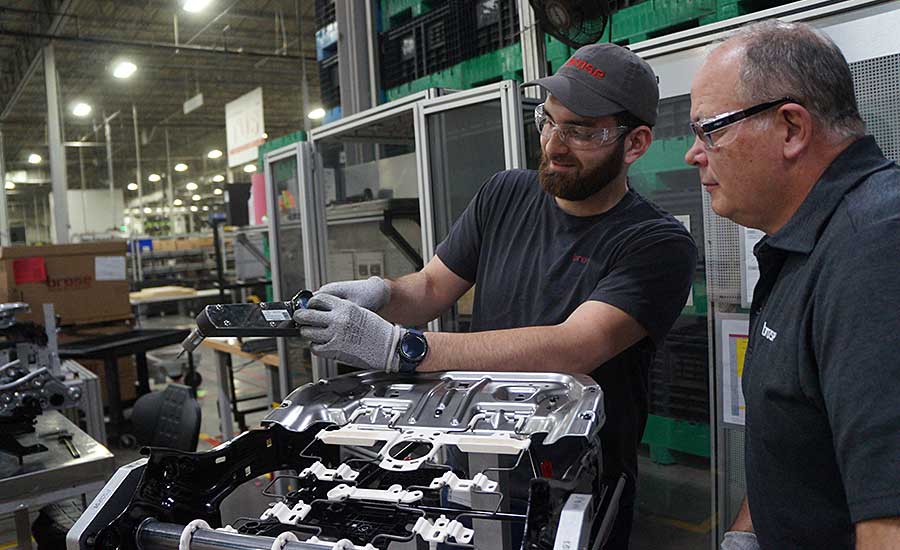
Brose Tuscaloosa opened in 2004 as a 75,000-square-foot facility to provide just-in-sequence door systems for Mercedes-Benz M-Class and R-Class vehicles. A few years later, the plant was expanded to assemble cooling fan modules for BMW.
A second expansion in 2012 was executed to launch a series of seating products for BMW, Ford, Mercedes-Benz and Volkswagen. The plant added laser welding cells and an e-coat paint line, plus an acoustics testing lab and a weld measurement lab.
Since production started in 2005, sales have increased by 600 percent. That prompted Brose to invest in an additional expansion in 2018 that added 80,000 square feet of space. The $14 million initiative included a new warehouse, a drive-in sound chamber, an employee cafeteria, new office space and security upgrades that enabled the plant to be classified as a foreign trade zone.
The warehouse features high-bay, very-narrow aisles to maximize floor space and improve material handling. Semiautomated lift trucks are required, due to extremely tight spaces. Tuggers provide line-side parts delivery. Sensors embedded in flow racks automatically trigger the warehouse to pick parts needed on assembly lines.
The new, state-of-the-art acoustics testing lab enables engineers to measure noise and vibration of either door modules or seat structures. As electric vehicles proliferate, the facility is becoming increasingly important for ensuring quality.
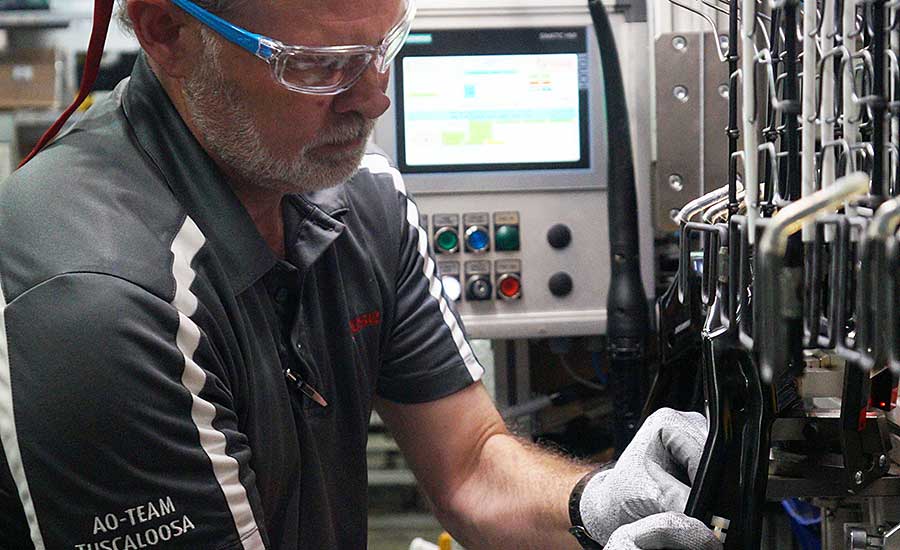
Scarce dining options nearby prompted Brose Tuscaloosa to install an employee cafeteria that provides on-site meal options. The company subsidizes about 45 percent of the cost of meals. The popular perk helps improve quality of life for employees, while also enabling Brose to compete in a tight labor market.
During the expansion, the plant added fencing and a guard house that tightened security and enabled it to become a foreign trade zone. Imported material can now be held without being subject to certain custom duties, which helps reduce operating costs.
Brose Tuscaloosa operates 12 final assembly lines, including eight on the seat side of the factory and four on the door side. Although more than 40 robots are in use in various parts of the facility, most production lines are semiautomatic, with operators interacting with presses, fastening tools and end-of-line functional test stands.
“Lines are flexible in terms of variants in customer project families, but are typically dedicated to customers,” says Griggs. “We have modified our equipment to allow similar products to be manufactured on existing equipment. Final assembly stations primarily use palletized conveyors and consist of seven to 12 workstations with a variety of tasks and complexity.”
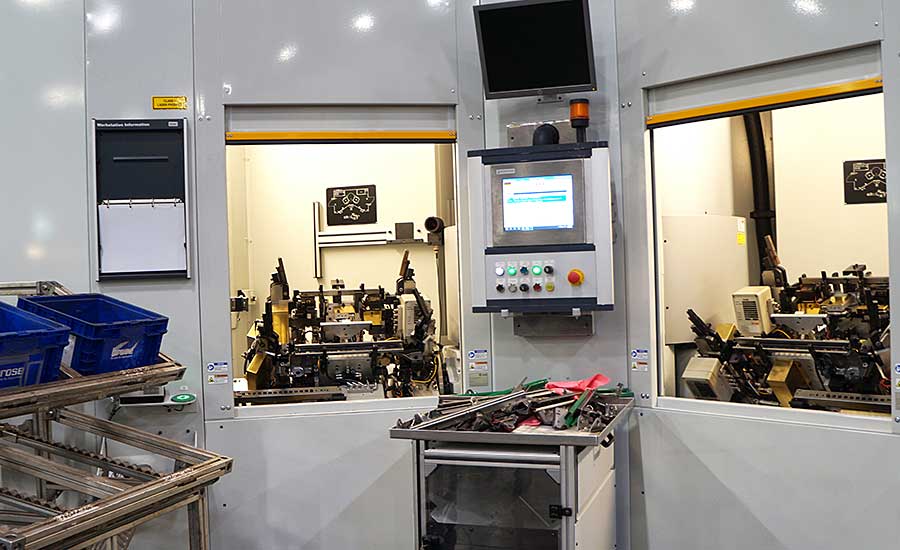
The door module lines are fed by subassembly lines that fasten and wind various components, such as riveting pulleys onto guide rails, and winding cables and harnesses. On the seat side of the factory, metal back frames are welded together, and assemblers also attach upper and lower rails with DC-electric fastening equipment.
“All workstations are equipped with poka-yoke features to error-proof assembly and ensure quality,” explains Griggs. “Our end-of-line test stations also check for various features. For instance, we use vision-guided robots to ensure that the correct components are installed.”
Fastening and welding play a critical role in assembling products at Brose Tuscaloosa.
“In the seating area, screw and bolt fastening are used on safety-critical joints,” says Griggs. “This requires close control of torque and angle, with a minimal of five-stages used for monitoring parameters during installation. We use the same technology to produce our door products.
“Our weld seams are also safety critical,” adds Griggs. “To meet federal safety standards, seat structures must be crash worthy. Therefore, we carefully monitor all of our weld seams and perform destructive testing to validate quality.
“Most joints are made with laser welders,” Griggs points out. “In laser welding, no additional material is added. The laser source infuses the material together, which reduces cost and produces a much cleaner seam. However, on certain applications, we use MAG welding, due to differences in the material thickness and joint type.”
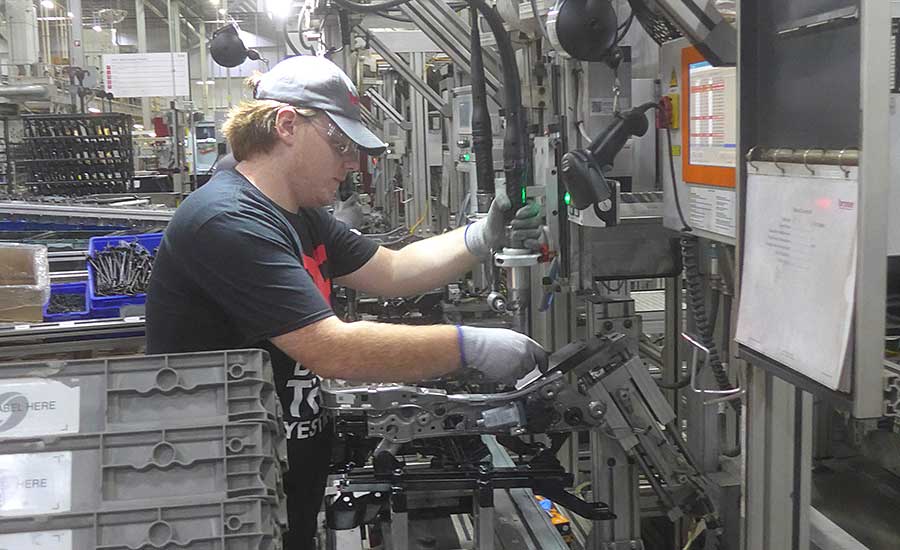
Brose Tuscaloosa has a long history of innovation and piloting new technologies. To improve efficiency and quality, the plant recently invested in direct-weld measurement technology for seat structure production. According to Griggs, the in-line weld monitoring system increases manufacturing efficiency, streamlines validation and minimizes waste.
Active steering of the laser beam enables the system to seek out defects immediately before, during and after the welding process. It measures key parameters, such as weld depth, part fit-up and seam position. The automated process also tracks seams to detect surface irregularities and ensure weld quality. It replaces an indirect measurement approach that required a one-hour validation process that paused production of assemblies after welding for up to 10 hours.
The 2022 Assembly Plant of the Year also recently acquired a drone that enables engineers to get a bird’s-eye view of the plant floor.
“The drone helps for benchmarking and sharing best practices,” says Griggs. “It enables better visualization for line layout and rebalancing initiatives. We’ve also used it to assist with inventory and inspect storage racks in the warehouse.”
“To ensure continuous improvement and reduce time to market, we actively engage in acquisitions and the concept phases of new projects,” adds Barbaretta. “By doing so, we find opportunities for equipment reuse, understand lessons learned, and implement modern technologies to create flexible concepts and decrease the time it takes to industrialize new projects.
“We dedicate innovative resources to our continuous improvement efforts and focus on daily monitoring of key improvement projects to ensure successful implementation,” Barbaretta points out. “Plan-Do-Check-Act logic is utilized systematically throughout the plant to focus on being better today than yesterday. These activities are supported by our onsite six sigma master black belt and dedicated problem solvers.”
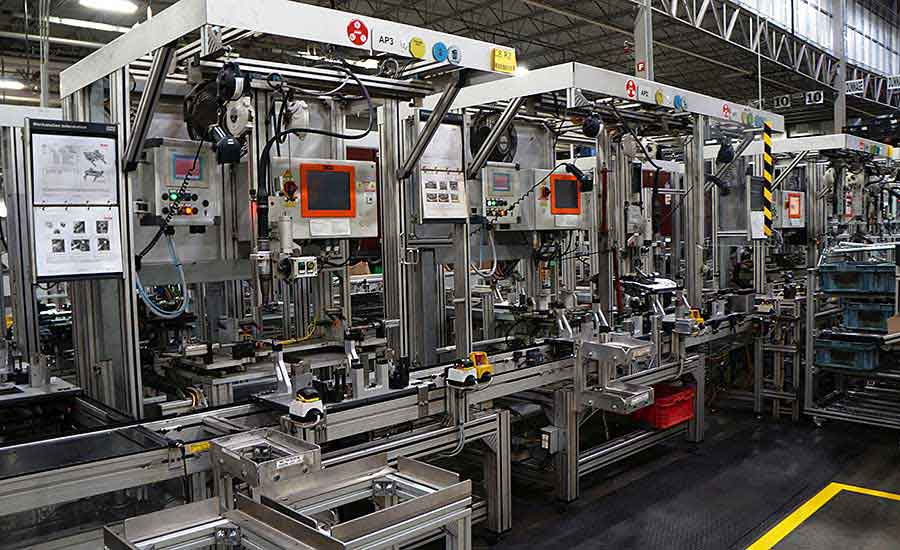
In addition, many operators are cross-trained to work at multiple workstations. That improves flexibility and enables management to move people around without impacting productivity.
“Each of our workstations are numbered one, two and three to indicate difficulty levels,” explains Barbaretta. “One is least difficult, two is intermediate and three is difficult.”
Employees accumulate points and are recognized for their achieved skills. “The system encourages people to learn more stations,” says Barbaretta.
“Today, we have flexible staffing and employees who can run multiple workstations,” notes Barbaretta. “Operators are now much more willing to cross train and learn new assembly tasks. Our industrial engineering team determines the tagging number based on input from team leaders and team members.”
Employee Engagement
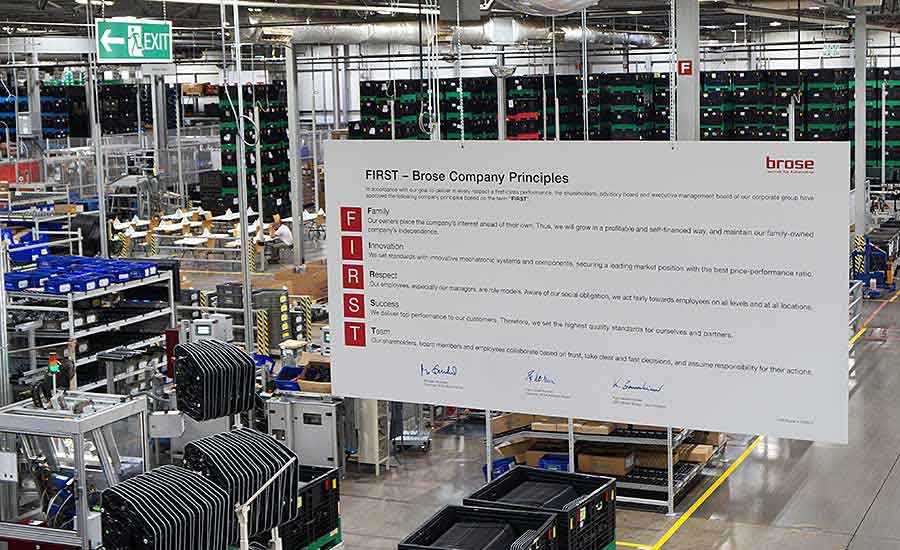
The 2022 Assembly Plant of the Year prides itself on fostering a culture that engages people, inspires continuous improvement initiatives, and makes the facility a fun, safe place to work.
“I’m a big proponent of change,” says Barbaretta. “I view my role as plant manager as helping everyone be successful team members. We focus on sharing information and spending our energy on solving problems, rather than status updates.
“In the past, we spent a tremendous amount of time and money creating data and stats,” explains Barbaretta. “To avoid multiple layers of report outs, we created a digital landscape and automated reports. This reduced our meeting cadences by several hours a day. Now, the teams can utilize their time more effectively.
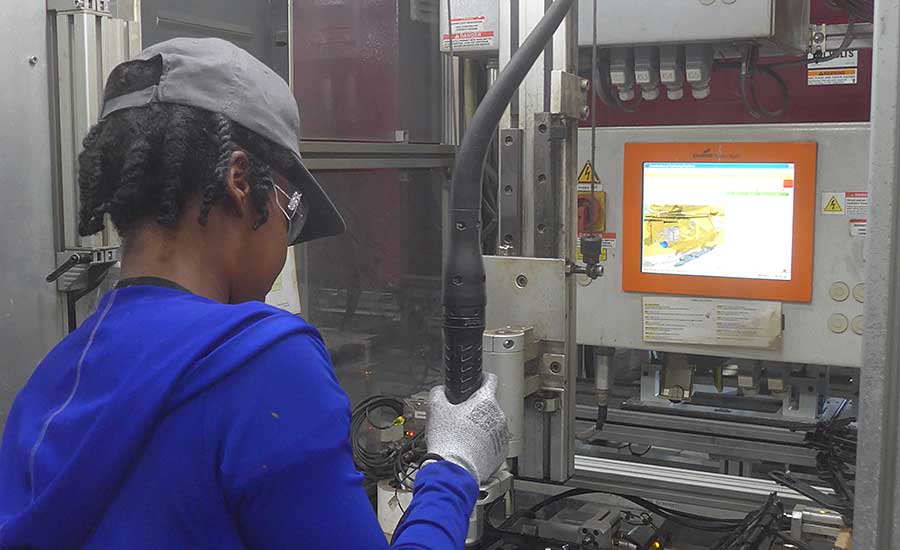
“I like to spend time on each shift and focus on direct communication with the employees, with the sole purpose of soliciting feedback and developing an open dialogue,” adds Barbaretta. “This creates relationships with our employees so they feel important, respected and valued. It demonstrates that we’re all on the same team, sharing the same goals and objectives.”
Information is readily available throughout the plant to ensure employees remain current on important topics such as technical issues or production changes. Transparent communication is also provided through multiple forums, including posters, dry-erase message boards, a company app and a weekly plant podcast called “Beats.”
In addition, Barbaretta hosts “lunch and learn” meetings three times a month. The small, informal gatherings involve a limited amount of employees and the head of human resources.
“During the casual lunch setting, people have an opportunity to exchange improvement ideas, raise concerns and have an open dialogue,” says Barbaretta.
“Our HR department also engages the team with a variety of different events,” explains Barbaretta. “For instance, we recently participated in an OSHA ‘safe and sound’ week that generated ideas to make the plant safer, using daily events and prizes.”
Another recent initiative that was been well received is a flexible part-time shift option where employees can choose to work any two or three days a week on any shift.
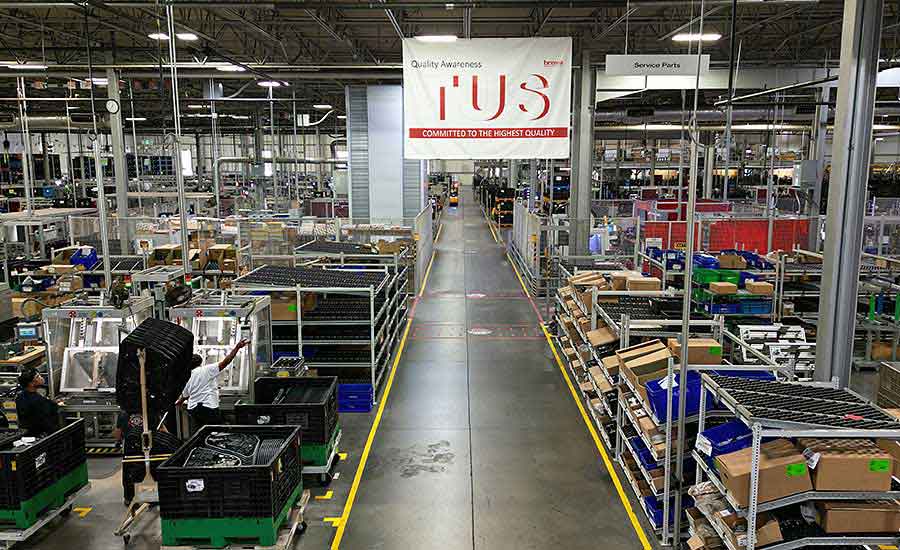
“It’s particularly friendly to families or students who need a more flexible work schedule,” says Barbaretta. “With this module, we have seen a 70 percent reduction in overtime, leading to lower fluctuation and increased productivity.”
Brose Tuscaloosa’s home-grown culture has fostered a team of employees who are passionate about coming up with new ideas and new ways to do things.
“People are enthusiastic about seeing their ideas become realized and implemented,” claims Barbaretta. “It’s a passion that stems from success.”
“We have developed a team capable of designing and building automation equipment in-house, including programming specialists,” explains Griggs. “We identify automation opportunities to increase throughput, improve quality, reduce cost and reduce the risk of injuries through regular kaizen events. Since 2018, we have generated more than $50 million in lifetime savings on existing programs and equipment.”
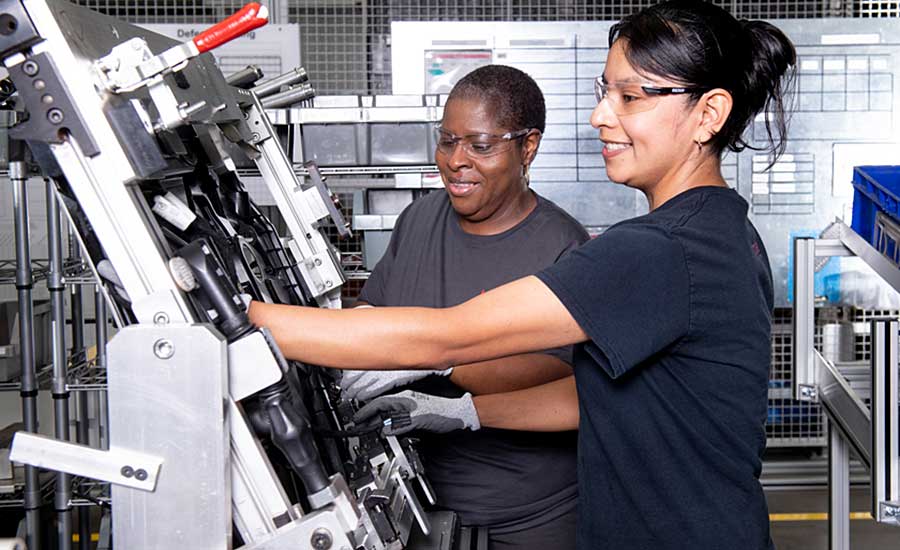
“Fear of failure does not deter us from striving for excellence,” adds Barbaretta. “We don’t dwell on our mistakes and instead applaud our successes.
“There are a lot of challenges facing manufacturers today, such as labor shortages and supply chain constraints,” notes Barbaretta. “Rather than waiting on changes, we focus on driving the change.
“We’re very adaptable,” says Barbaretta. “It shows in our quick handling of problem-solving techniques to identify the root cause. That philosophy has helped this plant get selected to do pilot programs for the entire Brose organization.”
About the Award
The Assembly Plant of the Year award was initiated in 2004 to showcase world-class production facilities in America, and the people, products and processes that make them successful. There is no entry fee. All manufacturers that assemble products in the United States are invited to nominate their plants. The winning plant receives a crystal award and a commemorative banner.
The Assembly Plant of the Year award is sponsored by ASSEMBLY Magazine. The goal of the award is to identify a state-of-the-art facility that has applied world-class processes to reduce production costs, increase productivity, shorten time to market or improve product quality.
All nominees were evaluated by ASSEMBLY’s editorial staff, based on criteria such as:
•Have assembly processes been improved through the use of new technology?
•Has the plant improved its performance by making more effective use of existing technology?
•Has the plant taken steps to reduce production costs?
•Have new or improved assembly processes resulted in increased productivity?
•Has the plant used assembly improvements to reduce time to market?
•Has the plant boosted bottom-line profits and competitive advantage?
•Did operators play a role in the successful implementation of new assembly strategies?
•Has a product been effectively designed for efficient assembly?
•Has the plant attempted to protect the environment and conserve natural resources?
As winner of the 19th annual Assembly Plant of the Year competition, Brose Tuscaloosa Inc. received an engraved crystal award and a commemorative banner.
Previous recipients of the Assembly Plant of the Year award were GKN Automotive (Newton, NC; Murakami Manufacturing USA Inc. (Campbellsville, KY); GE Appliances (Decatur, AL); Ford Motor Co. (Sterling Heights, MI); AGCO Corp., Jackson, MN; Bosch Rexroth Corp. (Fountain Inn, SC); Polaris Industries Inc. (Spirit Lake, IA); STIHL Inc. (Virginia Beach, VA); Northrop Grumman Corp. (Palmdale, CA); Ford Motor Co. (Wayne, MI); Philips Respironics (New Kensington, PA); Eaton Corp. (Lincoln, IL); Batesville Casket Co. (Manchester, TN); IBM Corp. (Poughkeepsie, NY); Schneider Electric/Square D (Lexington, KY); Lear Corp. (Montgomery, AL); Xerox Corp. (Webster, NY); and Kenworth Truck Co. (Renton, WA).
A nomination form for the 2023 Assembly Plant of the Year award will be available on ASSEMBLY's web site in early January.
